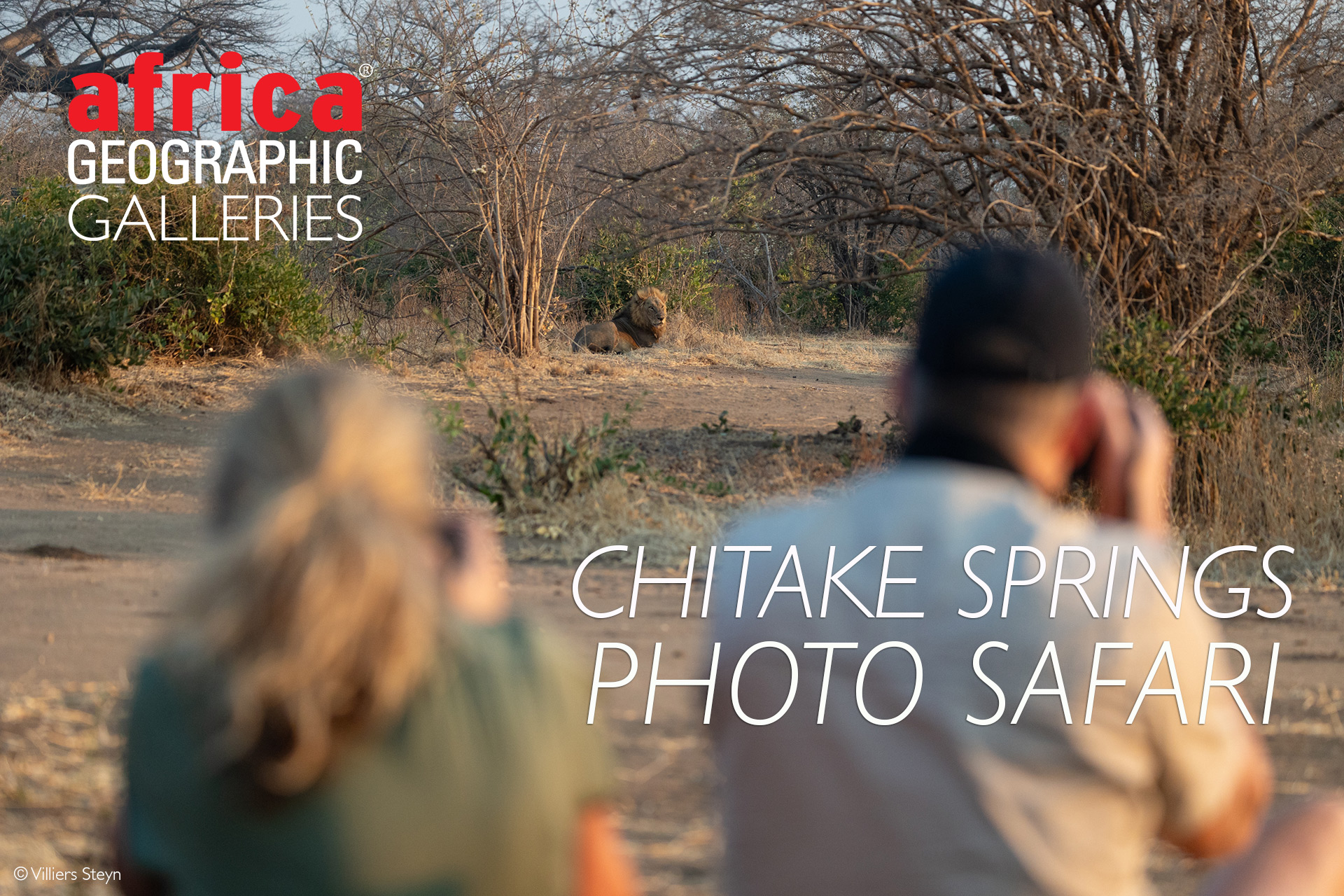
Where buffalo dust darkens the sky


I first heard of Chitake Springs when I was seven years old. The place where lions live in gangs, not prides, and where buffalo herds are so big, they kick up dust clouds that darken the skies. Fast forward 34 years, and Chitake Springs is much the same. Instead of daydreaming about it, I’ve just dusted off my camera after spending eight unforgettable days there leading a photographic safari for Africa Geographic.
As the crow flies, Chitake Springs lies approximately 50km from the Zambezi River in Zimbabwe’s Mana Pools National Park. Unlike the rich flood plains along the Zambezi, where relaxed elephant bulls and packs of curious African wild dogs pose in an iconic blue haze, the Chitake River habitat is much more rugged. Massive sausage trees, wild mangos and Zambezi figs line the edge of the riverbed, while ancient baobabs tower over the burnt orange landscape like sentinels. And fresh water bubbles up right throughout the year from the white sand in the river below. This water attracts thirsty buffalo and the hungry lions that hunt them. While exploring the area on foot, however, we learnt that it’s also the lifeblood for myriad other species.
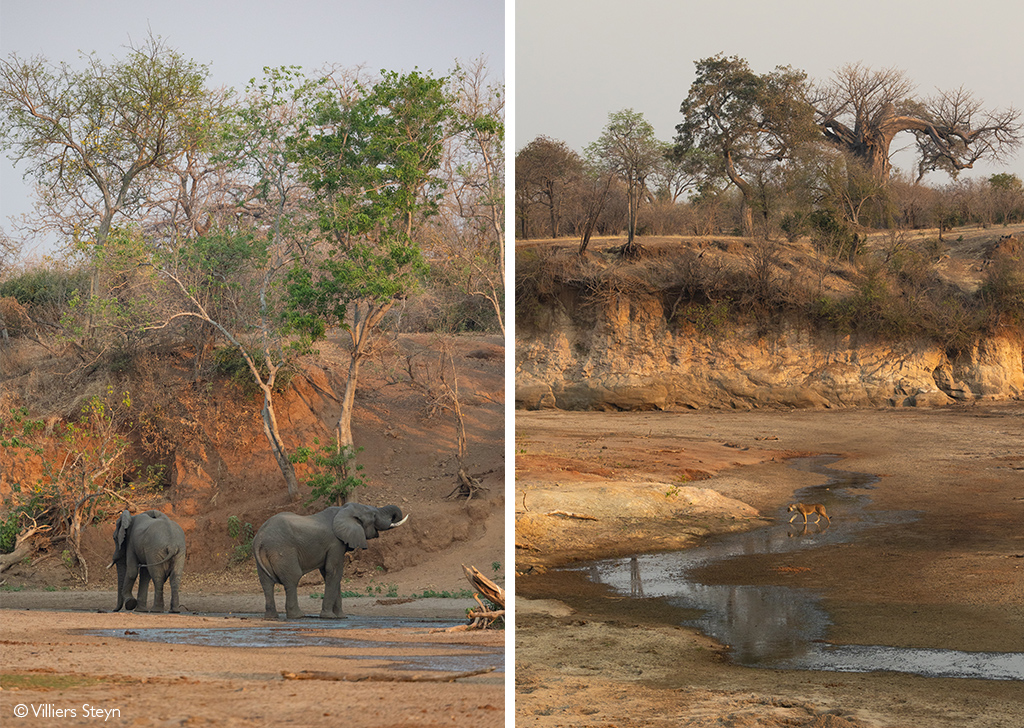
During our trip, we camped in the dense riverine thicket alongside the Chitake River downstream from the spring itself. Each morning at 5.30 am, I was woken by the cheerful song of a white-browed robin-chat, followed by the footsteps of professional guide Carl Nicholson, who ensured that no dangerous animals were lurking nearby. Tropical boubous and crested guinea fowl soon joined the dawn chorus while we sipped freshly brewed ‘moerkoffie’ around the fire.
We left our campsite on foot at sunrise, following the well-used elephant paths in the riverbed upstream towards the spring. The camp’s resident troop of baboons usually accompanied us, thankfully less interested in our leftover toast than they were in the fresh elephant dung scattered in the sand. Their antics made for some stunning golden-hour photographs.
 Find out about Chitake Springs for your next African safari, or plan your photographic safari. We have ready-made safaris to choose from – or ask us to build one just for you.
Find out about Chitake Springs for your next African safari, or plan your photographic safari. We have ready-made safaris to choose from – or ask us to build one just for you.
Depending on the direction and distance of the lion roars he had heard at night, Carl would choose different vantage points on the riverbank to scan the surroundings. We hoped to spot Hollywood, the biggest of three adult males, or any of the other 17-odd pride members that call Chitake home, and we weren’t disappointed. The only thing we saw more than the lions were their tracks, which crisscrossed the riverbed each morning. Luckily, Carl is an expert tracker, and more often than not, we followed him over the freshest set to Lion Triangle, a sunlit shelf close to where the river bends sharply that has become a favourite resting place for the lions.
It’s up to here that the water from the spring trickles before disappearing beneath the sand again, and, photographically speaking, it was my favourite spot. When there were no lions nearby, we lay flat on our stomachs in the sand, waiting for vibrant flocks of Lilian’s lovebirds to swoop in and quench their thirst right in front of us. On several occasions, impalas would also come down, providing more amazing ground-level photographic opportunities.
Around 9 am, our backup guide, Manu, would meet us at a fig tree overlooking the spring, loaded with coffee, tea and camping chairs. We’d usually sit until eleven, hoping a large herd of buffalo would come thundering down one of the many dusty chutes surrounding the spring. Since they drink at any time of the day, it’s a gamble, and twice we just missed them – once leaving an hour before they drank and another time arriving ten minutes too late.
On our second-to-last morning, however, luck was on our side. We were staking out the water when we heard the characteristic chirps of red-billed oxpeckers, followed by deep grunts and the dull thudding of heavy hooves. We quickly chose a safe spot from which to photograph the action and watched as more than two hundred buffalo stampeded down into the riverbed, briefly disappearing in their dust cloud before nearly draining the spring dry.


Around midday, we gathered under a colossal sausage tree in the centre of camp. We recounted such memorable moments while feasting on freshly baked bread rolls loaded with gooseberry jam before settling into a shady spot to pass the hot September afternoons. This was also an excellent time to look for seldom-seen birds like eastern nicators, red-throated twinspots and Livingstone’s fly-catchers, all of which are residents at Chitake.
Since it was too hot to walk in the afternoons, we typically took a short game drive around 4 pm each afternoon. On more than one occasion, we found lions resting in trees, supposedly to get respite from the relentless heat and tsetse flies. We returned to camp shortly after sunset each evening, when herds of ghostly elephants slowly made their way to the water. The only thing more remarkable than their silent footsteps was Carl’s sixth sense, which ensured we saw them before they strolled past our campsite. Why they drink almost exclusively at night at Chitake remains a mystery.
With an empty bucket shower and a full belly, I went to bed each night to the haunting soundtrack of spotted hyenas and the roars of Hollywood and his brothers. I felt like a child again, and like seven-year-old me on safari, I wished for The Sandman to come early so I could wake up again to the song of the white-browed robin-chat and another day in this wild and extraordinary place.

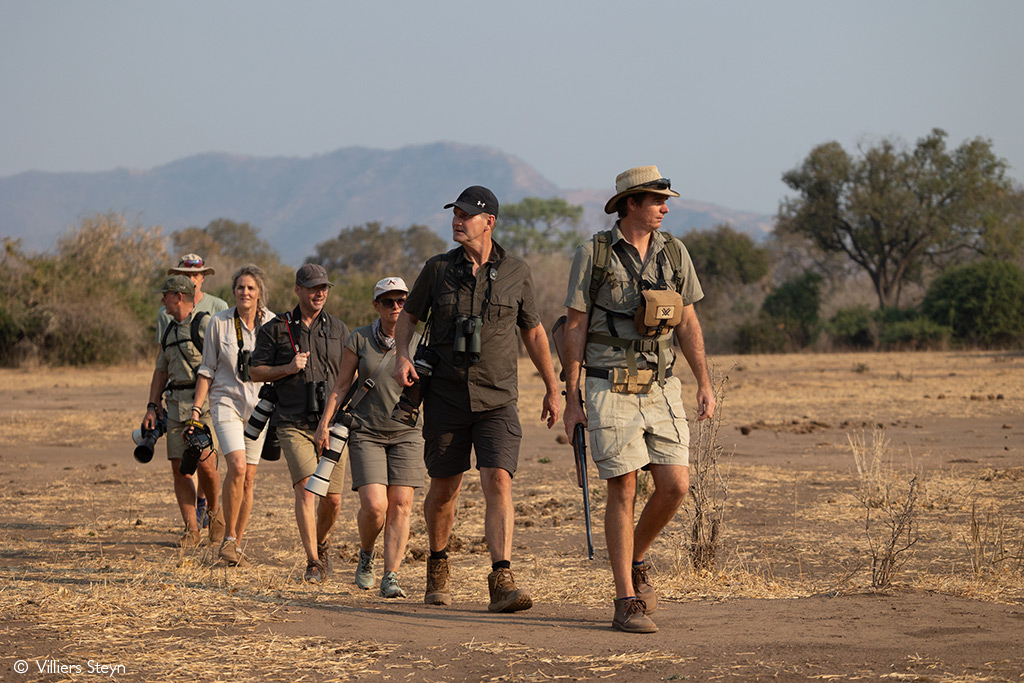


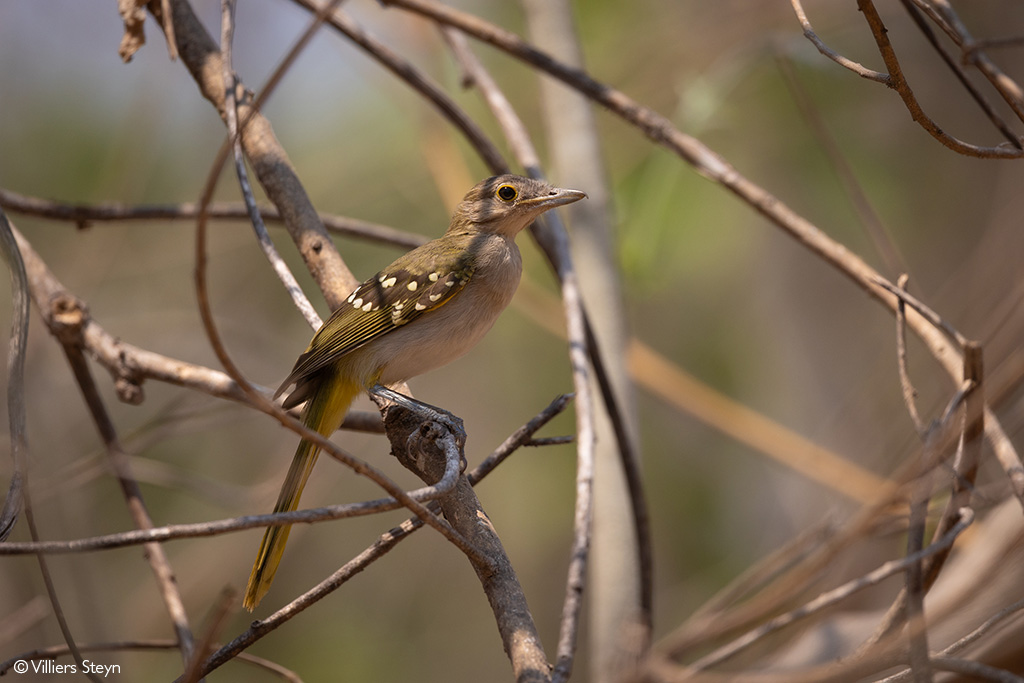
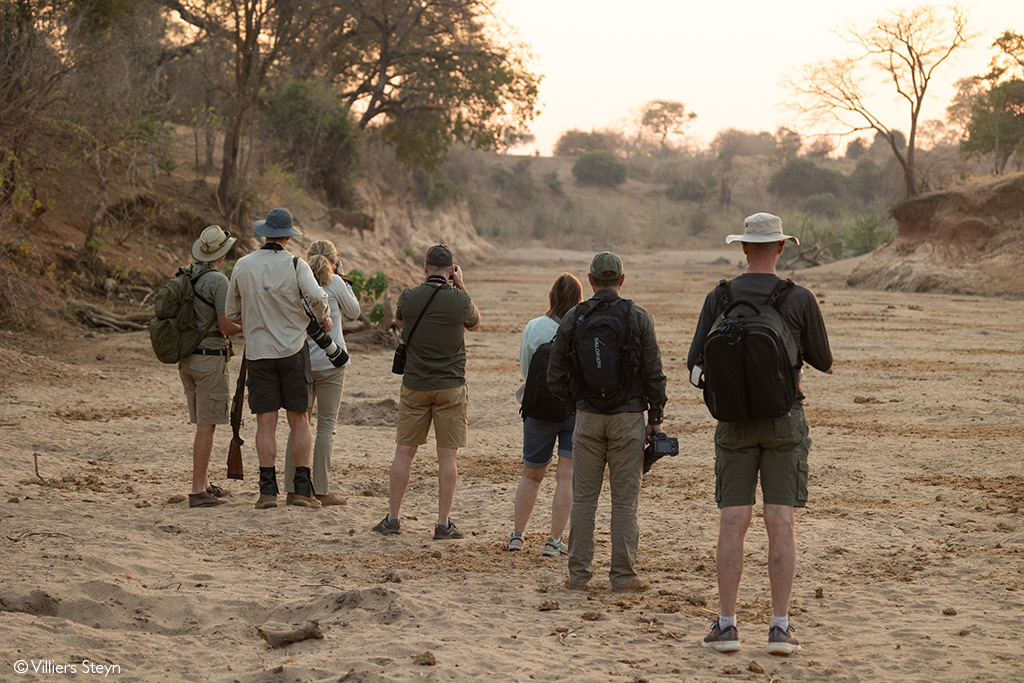
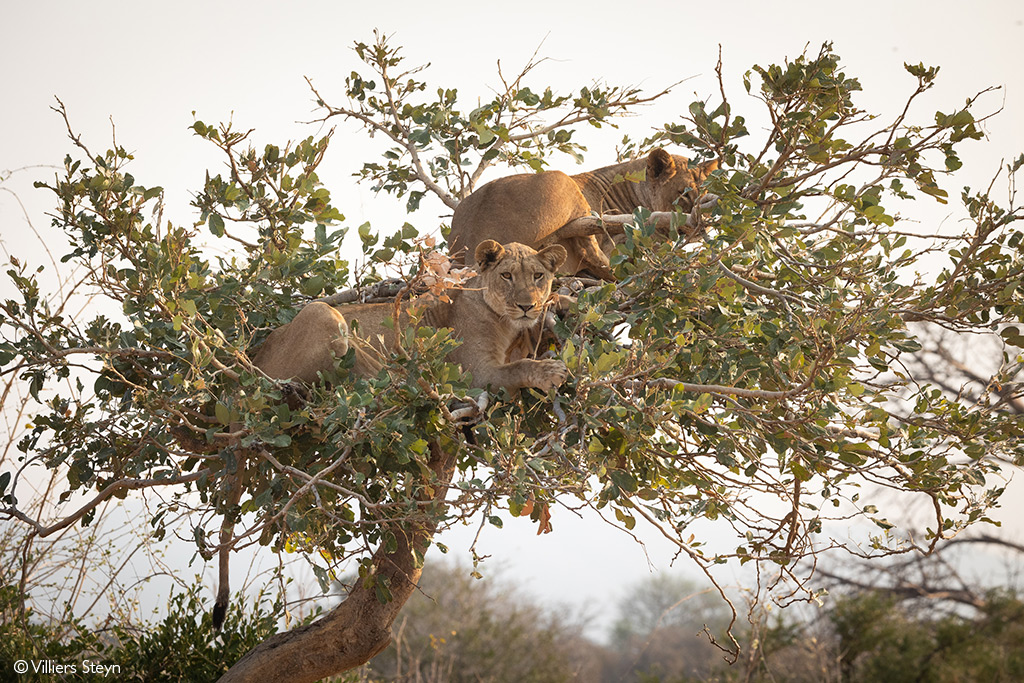

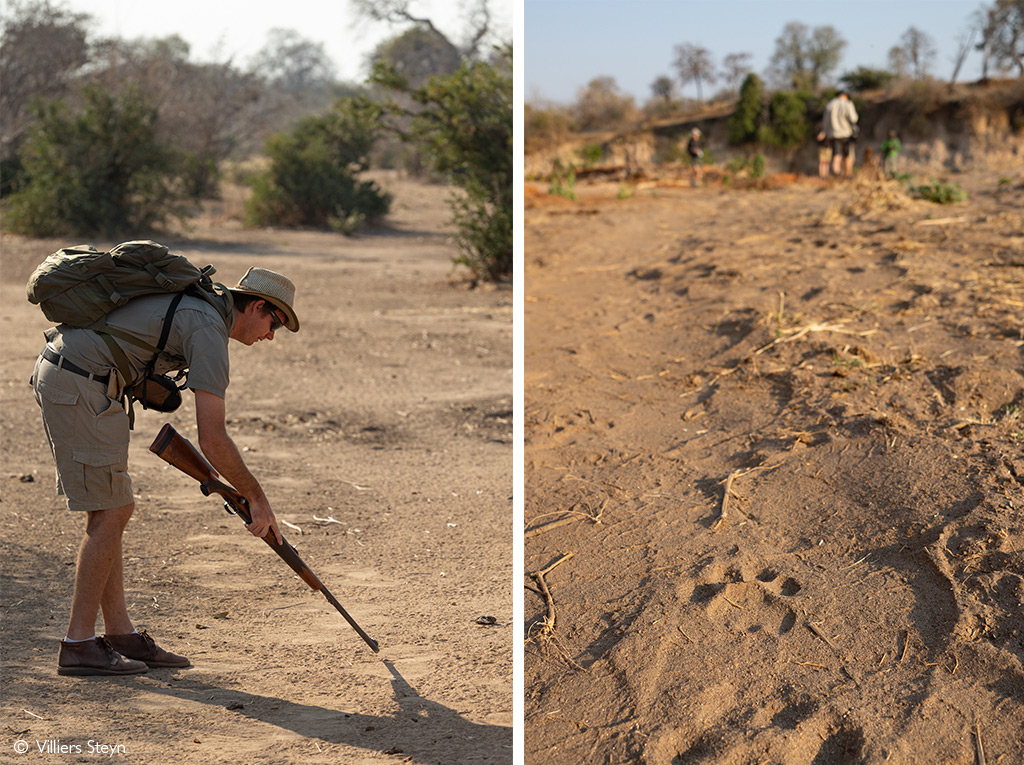
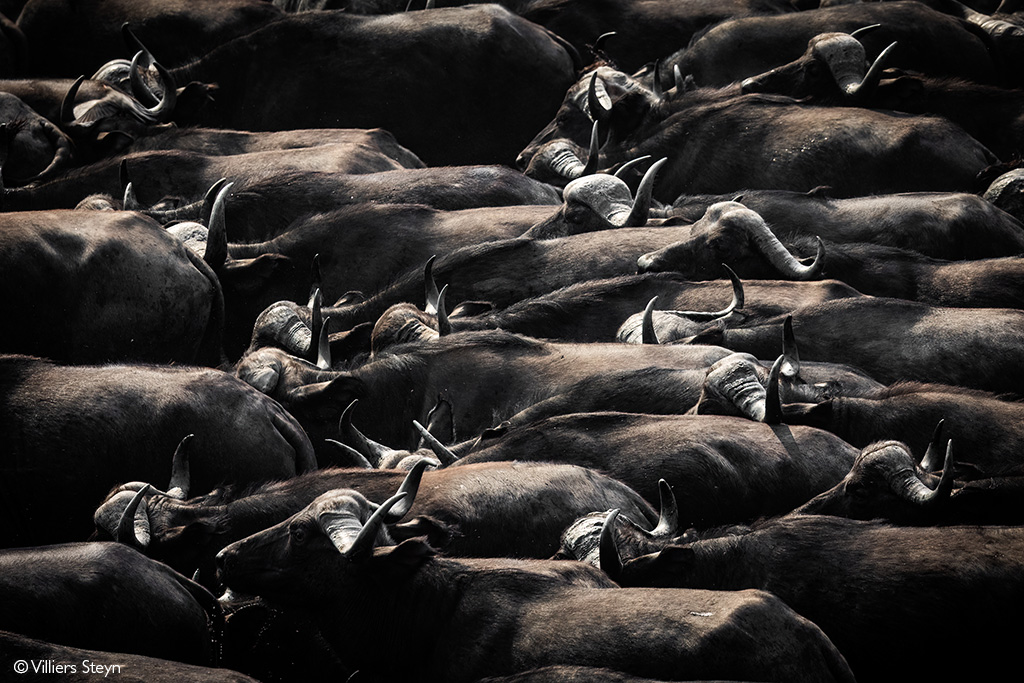

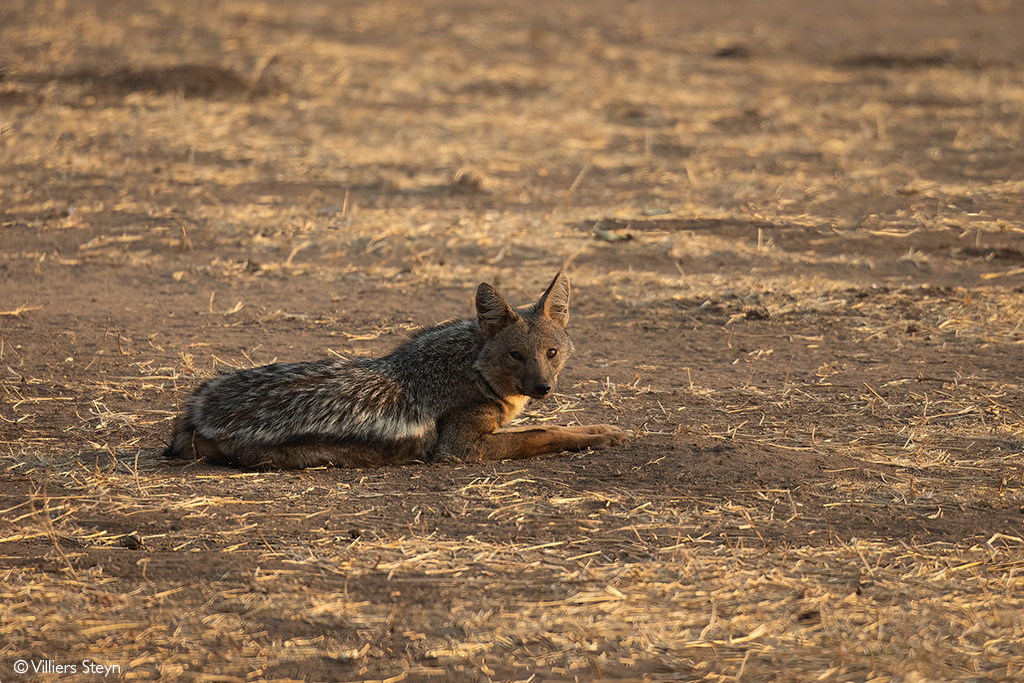
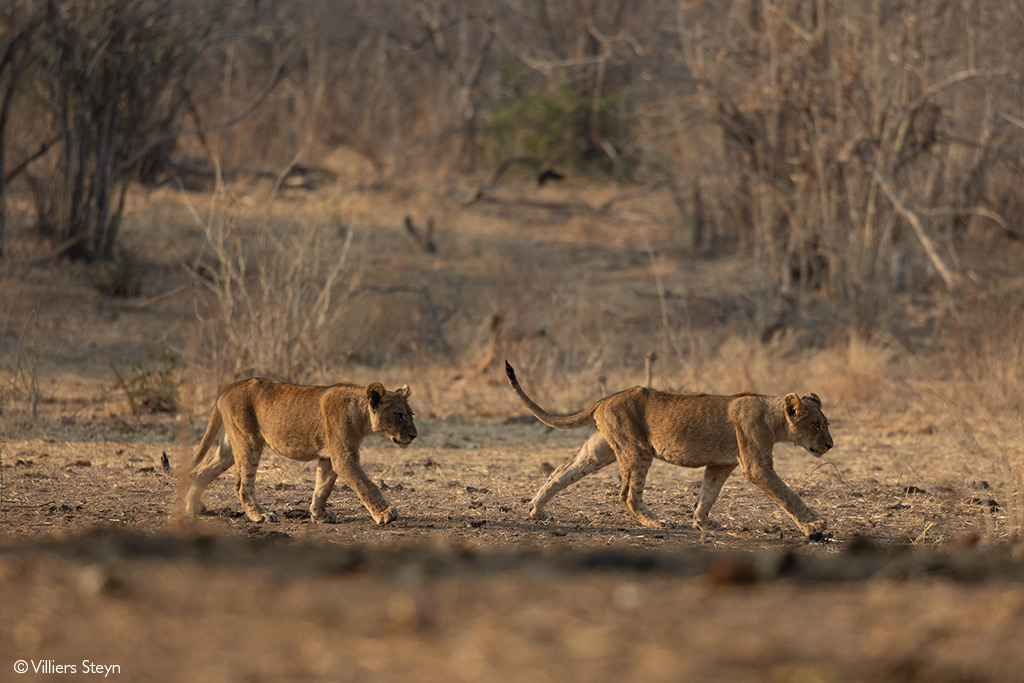


Join Villiers on a photographic safari
Villiers Steyn and Africa Geographic will be leading a photographic safari from 20-28 September 2024 – this time to Mana Pools, Zimbabwe. You’ll immerse yourself in the best that Mana Pools has to offer – from floodplains to valley – and enjoy excellent photographic opportunities and guidance. Only two spaces left! To book this 8-night safari for $9,322pps, contact our travel team here. (This safari does not go to Chitake Springs. To check out a safari to Chitake Springs, click here).
Follow Villiers on social media here: Instagram / Facebook
Resources on Chitake Springs
Check out Jens Cullman’s photo gallery from Chitake Springs here.
Watch a short trip report about this Chitake Springs safari below:
To comment on this story: Login (or sign up) to our app here - it's a troll-free safe place 🙂.![]()




